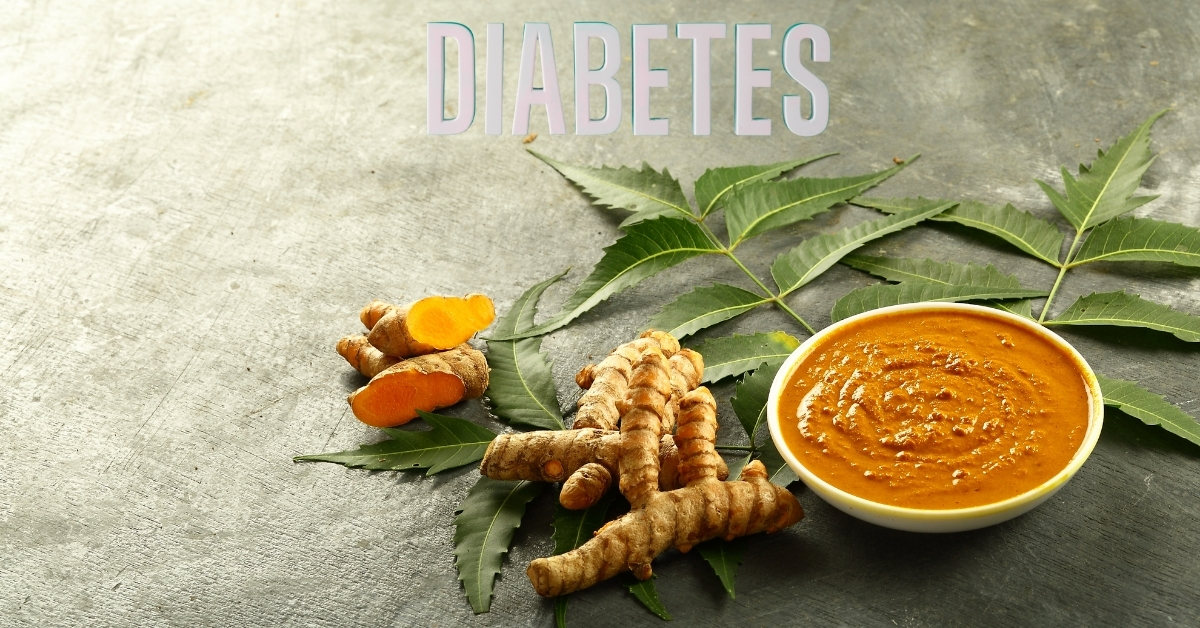Introduction: Diabetes Is Not a New-Age Disease
Do you know the fact that diabetes was recognised and treated as a metabolic disorder even in ancient Ayurveda? Centuries ago, long before glucometers and lab tests existed, Ayurvedic practitioners identified early signs of diabetes called as Prameha, just by observing symptoms like increased thirst, frequent urination, and burning sensations in the hands and feet. They even noted warning signs such as dryness in the mouth and accumulation of waste on the teeth. It’s amazing to think that what modern medicine calls diabetes was already being managed effectively thousands of years ago.
With diabetes becoming more common today, let’s explore how simple Ayurvedic remedies and daily habits can help manage it naturally, keeping blood sugar balanced and supporting overall well-being.What Is Diabetes?
Diabetes is a condition where your body has trouble controlling blood sugar levels. It usually happens when your pancreas cannot make enough insulin or your body cannot use insulin properly.
Pre-Diabetes Stage
- Your pancreas is making insulin, but it doesn’t work properly (insulin resistance).
- More common today in people who are inactive or overweight.
- Means a higher chance of developing type 2 diabetes and heart disease if not cautious in changing lifestyle and diet.
- Needs regular monitoring, as it can improve or progress over time.
Types of Diabetes
- Type 1 Diabetes: Pancreas produces little or no insulin.
- Type 2 Diabetes: Body becomes resistant to insulin, often due to lifestyle factors.
- Gestational Diabetes: Develops during pregnancy and may increase future diabetes risk.
Ayurvedic Perspective of Diabetes (Prameha)
Ayurveda views diabetes not just as a problem of high blood sugar but as a metabolic disorder that affects the entire body. It begins when Kapha Dosha becomes imbalanced, mainly due to a sedentary lifestyle, irregular eating habits, and an improper diet. Frequent consumption of heavy, oily, or sweet foods, refined carbohydrates, and fizzy sugary drinks overloads the digestive system. Irregular food habits like taking foods before the previous meal is digested, the liver and pancreas become restless. The digestive fire (Agni) weakens, leading to the formation of Ama toxins that clog the body’s internal channels. These blockages disturb the proper function of fat and muscle tissues and upset the body’s fluid balance, resulting in excessive, sweet-smelling urine, the classic sign of Madhumeha (diabetes).
Both Ayurveda and modern science recognise this as a lifestyle-driven metabolic disorder, a condition that arises when our daily habits no longer align with how our bodies are naturally designed to function.
Ayurvedic Prevention & Management:
Whether you are in a pre-diabetic stage, already managing diabetes, or simply want to prevent it, Ayurveda offers a simple and practical roadmap. It rests on three key pillars that support lifelong balance:
- Diet
- Herbs
- Lifestyle
Diet:
Diet plays the most crucial role in preventing and managing diabetes. This aligns with both modern nutrition and Ayurvedic principles. The balanced food sustains Agni, prevents sugar spikes, and reduces the buildup of Ama (toxins).
What the Body Needs
To maintain stable blood sugar and energy levels, your plate should have a healthy balance of proteins, complex carbohydrates, healthy fats, and fibre.
- Aim for a balanced food, 50% vegetables, 25% protein (dal, lentils, paneer, tofu, lean chicken, or fish), and 25% complex carbohydrates (brown rice, quinoa, millets like jowar and ragi, or 1 whole wheat chapati).
- Fiber from vegetables, whole grains, and legumes slows digestion and glucose absorption, reducing sugar spikes
- Include small amounts of good fats such as ghee, olive oil, or nuts to support digestion and hormonal balance.
Common Mistakes We Make
- Overloading on Carbohydrates – Many Indian diets rely too heavily on rice, roti. While carbs are essential, too much of them turn into glucose quickly, raising blood sugar.
- Wrong Food Combinations – Mixing dairy with fruits (like milk with banana) or eating fruits right after a heavy meal leads to toxin build up.
- Ignoring Protein and Fibre: Low-protein, low-fiber meals lead to fast sugar spikes and early hunger
- Irregular Eating Patterns: hampers functions of the liver and pancreas and toxin build up
Meal Timings:
Breakfast 7:30 – 8 AM
Mid-Morning Snack 10:30–11 AM
Lunch 12:30–1 PM
Evening Snack 4:30–5 PM
Dinner 6:30–7 PM
Early Morning (Empty Stomach)
- Bitter juices: Arugampul, Bitter Gourd (Karela), Neem, or Curry Leaves juice
- Amla juice with ginger, lemon, or curry leaves
- Soaked Flax seeds, horsegram, Chiaseeds, Fenugreek seeds
- Roasted and ground Fenugreek, Ajwain, Black Cumin with warm water
- Triphala water (night also advised)
Vegetables (Cooked or Lightly Steamed, Kapha-Pacifying): Bitter Gourd, Drumstick, Leafy Greens, Mustard Greens, Raw Papaya, Noolkol, Kovakai, Perkangai, Sorakai, Indian Brinjal/Eggplant, Broccoli, Cauliflower, Cabbage, Brussels Sprouts, Carrots, Peppers, Zucchini, Green Beans, Lettuce, Celery, Bok Choy, Artichoke, Mung Bean Sprouts, Kale, Radishes, Turnips, Rutabaga, Garlic, Ginger, Chilies/Hot Peppers, Curry Leaves, Cilantro.
Legumes: Chickpeas, Flat Beans, Mung/Green Gram, Pigeon Pea (Toor), Masoor, Adzuki generally soak it and have in morning
Meat (Moderation): Chicken, Turkey, Fish (freshwater/sustainable, max twice a week), Eggs (preferably organic, once a week, cooked or in curry)
Fruits (Low Sugar, In Moderation): Apple, Pomegranate, Cranberries, Grapefruit (small), Guava, Lemon, Lime, Mango (small in summer), Orange, Papaya, Pineapple, Blueberries, Strawberries, Raspberries, Blackberries
Dairy (Moderation): Takra/Buttermilk with roasted mild spices, Ghee (small quantity)
Nuts & Seeds (Healthy, Low-Glycemic, in Moderation): Almonds, Walnuts, Cashews, Flaxseeds, Chia Seeds, Pumpkin Seeds, Sunflower Seeds – all lightly roasted or raw, consumed in small portions.
Oils (Cold-Pressed, Controlled Usage): Mustard, Sunflower, Soy
Sweeteners (Limited Use): Better to avoid can use Raw Honey, Jaggery
Ama Deepana & Pachana Spices (Digestive & Metabolic Support): Ginger, Black Cumin (Kalonji), Mustard, Wild Celery, Nutmeg, Mace, Allspice, Cumin, Coriander, Fennel, Cardamom, Saffron, Bay Leaf, Black Pepper, Cinnamon, Clove, Asafetida, Turmeric
Grains: Ragi in form of chapatti or Dosai is safe always for diabetes, Wheat and Rice (good for moderation), Thin Millets (Jowar, Ragi, Kambu), Black Rice, Kuthiravalli Millet, Corn, Barley, Rye – use rice and wheat sparingly and prefer millets as white rice substitutes.
Foods to Avoid: Raw salads (if digestion weak), fermented/refrigerated/stale foods, refined sugar, bakery items, fried sweets, greasy/fried preparations, root vegetables (Potato, Beet, Tapioca, Yam, Tubers), Maida, Oats, heavy meats (Pork, Buffalo, Beef), Sesame/Groundnut Oil, Lard, Margarine, Ice Cream, Yogurt, Mushrooms
Ayurvedic Herbs & Classical Preparations for Diabetes
Guduchi Kwatha: Decoction or juice of Tinospora cordifolia mixed with honey; can be taken once or twice daily.
Nisha-Triphala Yoga: Paste or overnight-soaked powders of Nisha (Turmeric) with, Daruharidra , Triphala strained and mixed with honey; can be taken daily.
Turmeric + Jamun/ Asana Decoction: Turmeric (Curcuma longa) added to decoction of Jambul (Eugenia jambolana) or Asana (Pterocarpus marsupium); can be taken daily, preferably in the morning.
Jamun Seeds: Dry seeds powdered, 3 grams; can be mixed with turmeric decoction or buttermilk and taken twice daily.
Bitter Gourd / Bitter Melon: Juice of 4–5 fruits on empty stomach or seed powder/decoction; can also add small pieces in curries or stir-fries.
Bel Leaves: Fresh juice with a pinch of black pepper, taken daily.
Fenugreek Seeds: Soak or decoct seeds; consume daily to reduce sugar levels.
Neem: Fresh leaves made into juice or paste for internal use; take once daily.
Ayurvedic formulations commonly used for managing diabetes like Chandraprabha Vati, Triphala Churna ,Mehari Churna and some pattent medications are available to buy with proper consultation.
Precaution:
- Always consult your doctor before starting any Ayurvedic or home remedies.
- Do not stop or replace prescribed diabetes medication without your doctor’s guidance, even if taking Ayurvedic preparations.
- Adjust dosages and combinations only under professional supervision.
Lifestyle (Daily Practices for Diabetes Management)
- Daily Walking & Exercise: Ayurveda recommends daily exercise to a point of slight sweat. A 30-minute brisk walk is a great start. For Indians used to a carb-heavy diet, this is non-negotiable to burn glucose.
- Yoga Asanas: Surya Namaskar, Paschimottanasana, Ardha Matsyendrasana, Dhanurasana – help stimulate the pancreas and improve insulin sensitivity.
- Pranayama: Bhastrika and Kapalbhati – boost metabolism and support overall energy.
Conclusion:
One of the most powerful shifts for preventing diabetes is rethinking the Indian plate. In the UK, Western diets often portion carbs, fats, and protein, consciously, even in bread. We tend to treat everything as a side for roti or rice. Our ancestors already understood the principles of a balanced life and diet, but over time, habits changed, especially in Indian households. We must flip this mindset. Make vegetables and protein the main course, and carbs the side.
Healthy Diet Combined with daily brisk walking, stress management, and mindful lifestyle habits, this approach helps maintain fitness, supports healthy blood sugar, and significantly reduces the risk of diabetes. Prevention starts with awareness, small daily changes, and consistent effort.






